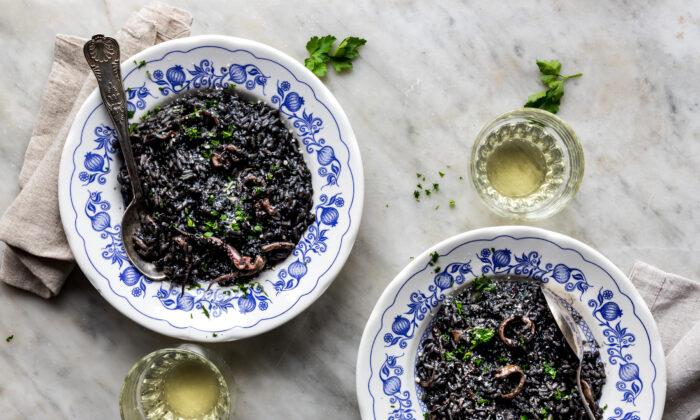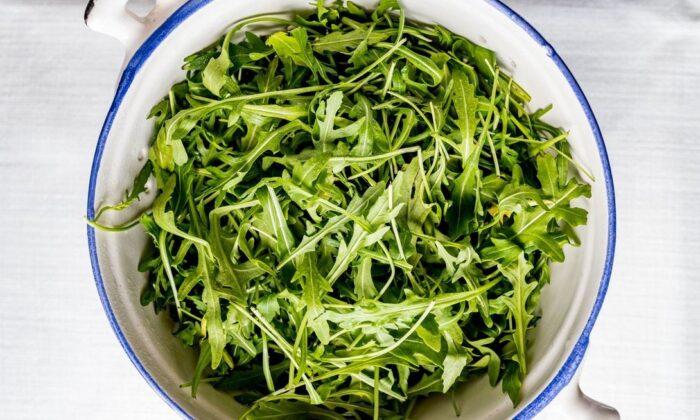This seafood risotto is striking in appearance: pitch black thanks to squid ink, which also lends a distinctive briny flavor. The use of squid ink is common throughout the Mediterranean, from Venice to the coast of Tuscany to Spain, with its traditional arroz negro.
In Italy, we commonly don’t associate fish with cheese—with a few significant exceptions—and it isn’t common to find cheese in a seafood risotto. But here, I’m breaking the rules: I’ve found that a generous knob of butter and a bit of grated Parmigiano Reggiano add richness, umami, and a delicate acidic note to the risotto, making it impossible to stop eating.
I learned this trick from Samin Nosrat, whose recipe for clam spaghetti calls for butter and grated Parmigiano Reggiano. I replicated her recipe exactly and found it the best spaghetti with clam sauce I had ever tasted.
- 6 tablespoons extra-virgin olive oil
- Dried red chile pepper flakes, to taste
- 13 ounces squid, cleaned and cut into small pieces
- 2 cloves garlic, smashed
- 1 1/2 cup (10 1/2 ounces) arborio or carnaroli rice
- 1/2 cup dry white wine
- 3 cups hot fish stock, or slightly salted hot water
- 1 1/2 teaspoons squid ink (two 4-gram packets)
- 2 tablespoons butter
- 2 tablespoons grated Parmigiano Reggiano
- Fine sea salt
- 2 tablespoons finely chopped fresh parsley
Add the squid and cook over medium heat until it is soft and has absorbed all the liquid it releases. If the squid isn’t soft yet, add more water and continue cooking as needed.
Add the rice and use a wooden spoon to stir it into the squid. Turn the heat to medium-low and let the rice toast, constantly stirring, until it is translucent, almost pearly. A few minutes will be enough.
Pour the white wine over the rice and cook, stirring with the wooden spoon, until all of it has cooked off or been absorbed by the rice.
Now, pour in the hot stock in four separate additions, stirring very often and waiting for each addition to be completely absorbed or evaporated before adding the next. Doing this, the risotto will become creamier thanks to the starch released by the rice as it is cooked in the stock. Halfway through the cooking, when you have used about half of the stock, add the squid ink and stir to dissolve it. This whole process will take about 15 minutes. Remember to taste the risotto every now and then, as you might not need all of the stock. The rice is ready when it feels soft, but still with a hard soul inside, slightly al dente.
When you have finished pouring in the stock—or maybe you’ll have just a tiny bit left—and the rice is cooked but still al dente, remove the risotto from the heat. Add the butter and the grated Parmigiano Reggiano, and stir well. Taste it one last time to see if it still needs a little salt.
Top the risotto with the finely chopped parsley and serve immediately.






Friends Read Free